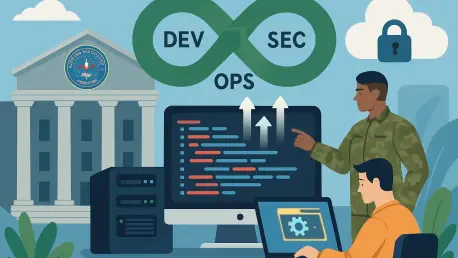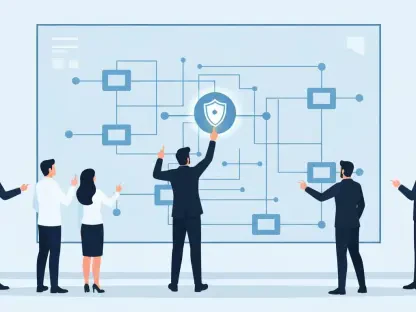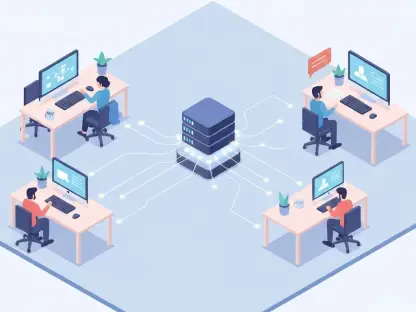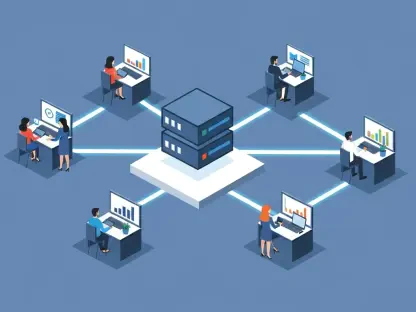In an era where technological superiority can determine the outcome of national security challenges, the U.S. Department of Defense (DOD) is embracing a transformative approach to software deployment through DevSecOps. This methodology, which seamlessly integrates development, security, and operations, is being heralded as a game-changer for the department, enabling faster, safer, and more scalable software delivery. At a prominent industry conference in Reston, Virginia, George Lamb, the DOD Information Networks Capabilities and Information Enterprise Director, outlined the department’s ambitious strategy to modernize its software lifecycle. With traditional deployment timelines often stretching over years, leaving critical systems outdated and vulnerable, the urgency for change has never been greater. DevSecOps offers a pathway to address these delays, ensuring mission readiness in a rapidly evolving threat landscape. This article explores the innovative frameworks, cultural shifts, and technological advancements driving the DOD’s efforts to revolutionize software deployment for enhanced operational agility.
Transforming Mission Readiness with a New Approach
The adoption of DevSecOps within the DOD is not merely a technical upgrade but a strategic imperative for maintaining mission readiness. Under the guidance of key leadership within the Chief Information Officer’s office, this methodology is being positioned as a cornerstone for success in modern defense operations. Pilot programs such as Platform One and Netcom have demonstrated remarkable results, with software patches reaching production environments in as little as an hour—a stark contrast to the multi-year delays seen in systems like the F-35 fighter jet. This rapid turnaround is critical for addressing emerging threats and ensuring that defense systems remain agile and responsive. By prioritizing speed alongside robust security measures, the DOD is redefining how software supports its overarching objectives, making it possible to deploy updates and enhancements at a pace that matches the demands of contemporary warfare.
Beyond the technical achievements, a profound cultural transformation is underway within the department. DevSecOps necessitates a collaborative mindset, breaking down long-standing silos between development, security, and operations teams. This integration fosters an environment where rapid iteration and continuous improvement become standard practice. The emphasis is on building software that not only meets immediate needs but also adapts to future challenges through ongoing refinement. Leadership is driving this shift by encouraging cross-functional teamwork and aligning all stakeholders toward shared mission goals. Such a holistic approach ensures that software delivery is not just a process but a dynamic capability, capable of withstanding the pressures of real-world application while maintaining the highest standards of security and reliability.
Innovative Frameworks Fueling Rapid Progress
At the heart of the DOD’s strategy lies the DevSecOps Infinity Loop, a conceptual model that emphasizes the continuous interplay between development and operations. This framework highlights the importance of feedback as a driver of improvement, ensuring that software deployment is not a final step but the beginning of an iterative cycle. While significant resources are often allocated to coding and development, the operations phase—where software is implemented and real-world data is collected—frequently remains underdeveloped. The Infinity Loop addresses this gap by promoting constant feedback mechanisms, allowing teams to refine and enhance systems with each iteration. This approach is pivotal for achieving scalability and maintaining the rapid deployment cycles necessary to keep defense systems at the cutting edge.
Another critical innovation bolstering the DOD’s efforts is continuous authorization to operate (cATO), which reimagines security protocols for faster development. Traditional authorization processes often create bottlenecks, delaying critical updates. In contrast, cATO integrates real-time security assessments and zero trust principles, enabling teams to maintain momentum without sacrificing safety. Advanced tools and dashboards provide immediate insights into potential vulnerabilities, empowering swift corrective actions. Progress in this area is evident with initiatives like the Army’s push to secure cATO approval for select software factories, reflecting a commitment to balancing speed with stringent cybersecurity standards. This mechanism ensures that the department can deploy software at an accelerated pace while safeguarding against risks in dynamic operational environments.
Harnessing External Tools and Cutting-Edge Technology
Recognizing the value of external resources, the DOD is actively incorporating commercial software into its DevSecOps pipeline to enhance capabilities. Initiatives like the Software Fast Track (SWFT) process and the Iron Bank, a container repository managed under Platform One, play a crucial role in this integration. Iron Bank meticulously evaluates thousands of commercial containers, providing detailed risk assessments rather than binary approvals or rejections. This nuanced approach allows for the secure deployment of commercial solutions under controlled conditions, significantly speeding up the adoption process. By leveraging these external tools, the department can scale its operations efficiently while adhering to rigorous security protocols, ensuring that mission-critical systems benefit from the latest advancements available in the commercial sector.
Emerging technologies, particularly Artificial Intelligence (AI), are also being harnessed to amplify the effectiveness of DevSecOps within the DOD. AI is utilized across various stages, from assisting in code creation to identifying anomalies in deployed systems, thereby accelerating production cycles. Treated as an integral component of the software ecosystem within the Infinity Loop, AI serves as a powerful accelerator, enabling the department to push boundaries in deployment speed. With focused efforts from the Office of the CIO to integrate AI-driven solutions, the DOD is positioning itself to stay ahead of technological trends. This strategic adoption of cutting-edge tools underscores a forward-looking approach, ensuring that software deployment processes remain agile and responsive to the evolving needs of defense operations.
Addressing Challenges for Department-Wide Implementation
Despite the promising advancements, scaling DevSecOps across the entire DOD faces significant obstacles, particularly the lack of a formalized policy to mandate its adoption. Many legacy programs remain entrenched in outdated development practices, resistant to the agile methodologies that DevSecOps champions. A codified instruction from the department is seen as essential—a compelling force to drive modernization across all initiatives. While pilot programs and reference designs have laid a strong foundation, broader implementation requires clear directives to ensure consistency. Without such a policy framework, the risk persists that fragmented approaches will undermine the department’s overarching goals, leaving critical systems vulnerable to delays and inefficiencies that modern threats exploit.
Cultural resistance also poses a formidable barrier to widespread adoption of DevSecOps within the DOD. Shifting mindsets from traditional, siloed workflows to integrated, iterative processes demands sustained leadership commitment and comprehensive training. Encouraging a department-wide cultural evolution involves not only introducing new tools but also redefining how teams collaborate and prioritize security from the outset. Addressing this challenge requires a multi-faceted strategy, including policy reinforcement and active engagement from top-level officials to champion the benefits of DevSecOps. Only through persistent efforts to align organizational values with modern software practices can the department fully transition to a model that supports rapid, secure deployment across all operational domains.
Paving the Way for Future Success
Reflecting on the strides made, the DOD’s journey with DevSecOps marks a pivotal shift in how software deployment is approached to meet urgent national security needs. The integration of agile methodologies, continuous authorization processes, and commercial solutions has already shown tangible benefits, drastically reducing deployment timelines for critical systems. The adoption of AI as a supportive tool further amplifies these efforts, embedding innovation into the core of defense operations. Yet, the path forward demands persistent focus on overcoming operational weaknesses and cultural hurdles that have slowed progress in certain areas. Looking ahead, the department needs to prioritize the establishment of formal policies to standardize DevSecOps practices across all programs. Strengthening leadership initiatives to drive cultural change is equally vital, ensuring that every team embraces the collaborative ethos required for success. By continuing to build on pilot achievements and addressing policy gaps, the DOD can solidify its position as a leader in software modernization, ready to tackle future challenges with unmatched agility and security.









